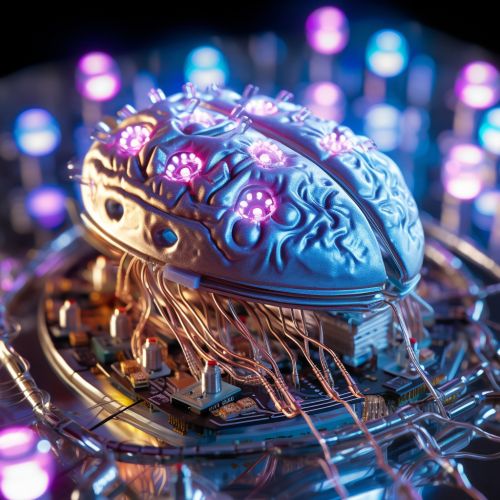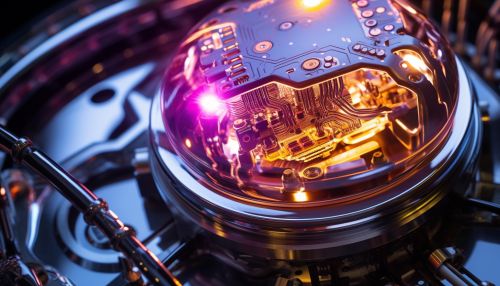Brain–machine interface
Introduction
A brain-machine interface (BMI), also known as a brain-computer interface (BCI), is a direct communication pathway between an enhanced or wired brain and an external device. BMIs are often directed at researching, mapping, assisting, augmenting, or repairing human cognitive or sensory-motor functions.


History
The history of brain-machine interfaces dates back to the early 20th century with the development of the first electroencephalogram (EEG) in humans. The concept of a BMI, however, was not seriously considered until the 1970s, with the advent of computers and the concept of artificial intelligence (AI).
Principles
BMIs are designed to enable communication between the brain and external devices. This is achieved through the conversion of neuronal information into commands capable of controlling external software or hardware such as a computer or robotic arm.
Types of Brain-Machine Interfaces
There are two main types of BMIs: invasive and non-invasive. Invasive BMIs involve the implantation of electrodes into the brain, while non-invasive BMIs use sensors placed on the scalp.
Applications
BMIs have a wide range of applications, from medical applications such as in the treatment of Parkinson’s disease to military applications such as controlling unmanned aerial vehicles (UAVs).
Challenges and Ethical Considerations
Despite the potential benefits, there are several challenges and ethical considerations associated with the use of BMIs. These include the risk of infection from invasive BMIs, the potential for misuse of the technology, and concerns about privacy and autonomy.
Future Directions
The field of BMIs is rapidly evolving, with ongoing research focused on improving the accuracy and reliability of the technology, as well as expanding its potential applications.
